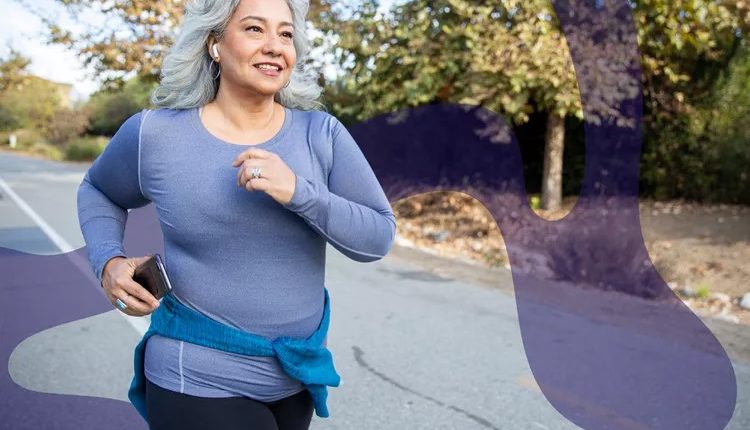Although most of us are aware of having our blood pressure monitored, many of us are not clear exactly what is being measured—or why knowing your numbers is crucial. Blood pressure is the force the blood applies to the artery walls during flow. And arteries are the blood vessels transporting blood from the heart to different regions of the body.
Diastolic blood pressure, the bottom number in your blood pressure reading, is the lowest amount of pressure the blood is exerting on the artery walls just before the next heart contraction; systolic blood pressure, the top number in your blood pressure reading, is the highest amount of pressure the blood exerts when the heart muscle contracts (or beats.
Consistently high blood pressure, hypertension, is a recognized risk factor for heart disease and stroke—both major causes of death in the United States. About half of U.S. adults have hypertension; in 2022, it will be a main or contributing factor behind 665,875 fatalities in the country.
The good news is that, other from using medication, there are really easy alternatives to help control blood pressure. And a fresh research in Circulation reveals how easily many people could lower their blood pressure. Let us examine their findings.
How Was This Study Conducted & What Did They Find?
Including over 15,000 people, almost half female, this survey found an average age of 54. Six earlier investigations from the United Kingdom, Netherlands, Australia, Denmark and Finland provided data for researchers. These were subsequently combined under the Prospective Physical Activity, Sitting and Sleep Consortium (ProPASS) one cohort name.
Every person wore an accelerometer on their thighs for a whole week, twenty-four hours a day. (An accelerometer measures several kinds of movement outside of simply steps, much as a fancy pedometer.)
Six forms of behavior were under study: sleep, sedentary behavior, standing, slow walking, quick walking, and combined vigorous “exercise-like” activities. Among the vigorous exercise-like pursuits were running, cycling, stair climbing, and hillwalking.
Many statistical tests were conducted, including ones accounting for factors influencing blood pressure—such as age, sex, smoking status, and alcohol intake.
Just substituting five minutes of idle time for rigorous exercise-like activity, researchers discovered that resting systolic blood pressure was lowered by an average of 0.68 mmHg and diastolic by 0.54 mmHg (mmHg is the measurement used for blood pressure).
To project the impact on blood pressure under various situations, researchers also conducted several statistical models. Exercise-like activities replaced each of the other activities—like standing or gently walking—resulting in an average reduction of 2 mmHg in systolic blood pressure and 1 mmHg in diastolic blood pressure, therefore producing clinically meaningful decreases in blood pressure. For instance, they discovered that 20 to 27 minutes of strenuous exercise daily could possibly lower cardiovascular disease by up to 28 percent by replacing lazy behavior.
Clinically significant refers to changes sufficient for your healthcare provider to take into account altering the course of treatment for your illness. If you use medicine to help control your blood pressure, for instance, the dosage may be lowered should other factors—such as weight loss or exercise—cause your blood pressure to drop.
What Does This Mean?
Emmanual Stamatakis, Ph.D., study author said in a press release, “The finding that doing as little as five extra minutes of exercise daily could be associated with measurably lower blood pressure readings emphasizes how powerful short bouts of higher intensity movement could be for blood pressure management.”
These scientists also point out that “exercise-like activity” comprises activities you would already naturally engage in during your day—such as running to catch your Uber ride, riding your bike to the market or utilizing the stairs rather than the elevator. It is the additional movement carried out in brief bursts outside of official exercise.
Your present degree of fitness will be one of numerous criteria determining how these results pertain to you. If your blood pressure is in a healthy range and you already exercise regularly at a vigorous intensity for the advised minimum of 75 minutes per week, you most likely won’s resting blood pressure won’t change much by adding 5 minutes of vigorous exercise-like activity a day.
If your main form of exercise is walking on flat terrain at a slow to moderate speed or you are not following current exercise recommendations, you could find great benefit from including spurts of more intense movement throughout your day.
For those who either don’t now regularly engage in physical activity or those who undertake more low-intensity exercise, these researchers essentially find that the strong bursts of movement make all the difference. Even for brief bursts, increasing the intensity challenges the respiratory and cardiovascular systems more, therefore promoting better health.
How Does This Apply to Real Life?
The body is very remarkable in its capacity for environmental adaptation. Learning a new language or another ability is similar. It’s first a fight, thus you truly have to consider it. Still, it becomes a habit after time and loses its challenge. This also applies to exercise; following the same program will make things simpler over time and while you will keep the advantages you have acquired, you most likely won’t add any more benefits unless you vary things.
Add some higher-intensity bursts to your program if you have been following the same one for some time and want more health benefits. If you stroll and follow the same path, vary it and include some hills. Alternatively include brief sprints of sprinting into your walk. If you cannot run, speed your walking pace as rapidly as you can for your bursts. Another excellent addition to your walks is skipping, which especially if you use your arms will greatly raise your heart rate.
You might also fit these spurts into your regular schedule. When you can, pick the steps if you have to decide between the elevator or escalator. Run up the stairs or take two at a time to make it more challenging if you find it easy to climb them.
From your automobile into your house sprint one or two bags of groceries at a time, even if it sounds ridiculous. Run to the store door after parking far at the end of the lot. Take smaller loads up the stairs so you have to complete more flights of stairs if your laundry is below the bedrooms. Vacuum vigorously for a burst, and the bonus is finishing it faster.
Should you find yourself unable of engaging in any of the described lower body exercises, you might want to explore an arm ergometer—akin to bike pedals for your arms. As these motions become comfortable, you might also execute upper body motions such arm circles, boxing motions, raising your arms above your head, and then add light dumbbells.












